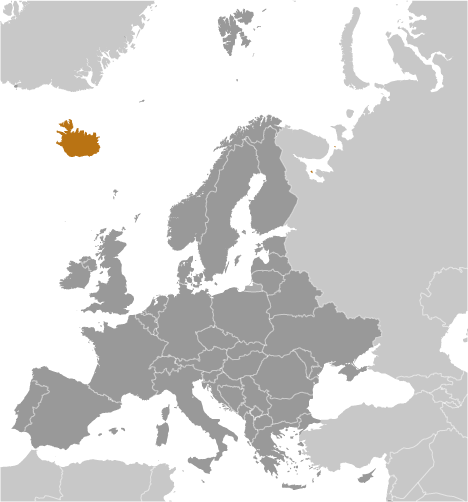Think about the country of Iceland. What do you think it looks like?
Its name is a hint. Iceland has many glaciers, large sheets of ice. It has many rivers made from melting glaciers.
Iceland is also a land of fire. Hot water from deep in the earth shoots out of vents in the ground. There are many active and inactive volcanoes. About 85% of the homes in Iceland get energy from volcanoes and vents.

When volcanoes erupt, the impact goes farther than Iceland. Ash can fall over northern Europe. Huge smoke plumes hide the sky, affecting air traffic. In 2010, eruptions in Iceland caused many flights to be canceled. More than 10 million travelers were affected.
Large areas of Iceland are covered with hardened lava from old eruptions. These areas are called lava fields. They are many miles in area. Some are covered with miles of moss or with ice sheets. Some grow deeper when new lava flows from volcanoes.


Iceland is a small island, only about the size of Kentucky. It is located at the Arctic Circle. Despite its location, the weather is not as cold as you might think. The warm Gulf Stream in the Atlantic Ocean keeps winters mild. Summers are cool.
In the winter, there are many days without sun. These are called the Polar Nights. In the summer, there are many days when the sun does not set. This is called the Midnight Sun.

Iceland has the fewest people of any country in Europe. The population is about 330,000, a little more than Corpus Christi, Texas. About two-thirds live in and around the capital, Reykjavik (RYE-keh-vick). The capital is in the south, the warmer part of the country. The northern part is sparsely populated.
